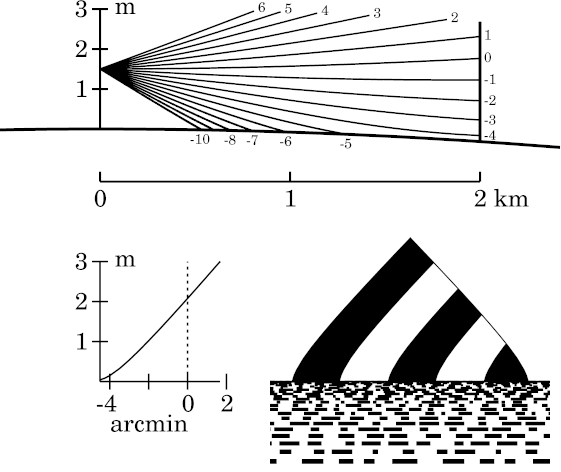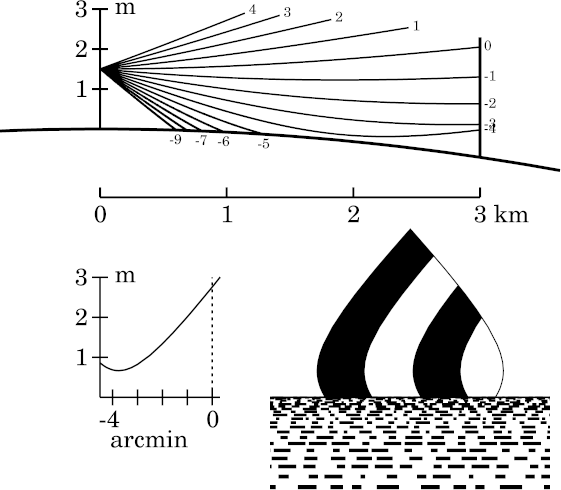
With the target only 1 km away, there's no mirage, because ray curvature is so small that no ray crossing can occur in this short distance. (The smallness of the ray curvature is a direct result of the small curvature of the temperature profile.)
Notice that the transfer curve (in the lower left of the figure) is almost a straight line.
Consequently, the target hardly appears distorted.
Notice that it's much closer than the sea horizon, which can be seen
behind it in the simulation at the right.

If the lapse rate were constant, we'd expect the target to have half the angular subtense it had at 1 km, which was 10′. Half of 10 is 5; but the actual subtense of the target here is larger: about 6′. That's because differential refraction has stretched the lower part of the target (note the curve at the bottom of the transfer curve, and the corresponding curvature in the lowest parts of the target.) This vertical stretching, or magnification, constitutes towering.
Because the curvature of the
temperature
profile
is marked only near the sea surface, the top of the target still looks
fairly normal. Notice that its apex is still very nearly a right angle.

The folding occurs at the minimum in the transfer curve, where the vertical magnification of the image is infinite. The region of large vertical magnification covers more of the target here, so the towering is more pronounced.
The apparent size of the mirage can be measured on the transfer curve,
from the vertical axis at the apparent horizon to the minimum in the
curve: it's a little less than a minute of arc in extent.

Although the target is now four times as far away as it was at 1 km, where it subtended about 10′ of arc, it remains much larger than the 2.5′ one would expect from simple distance scaling if the whole target were still visible. Actually, you can see from the disappearance of another stripe that only about half of the whole target is still in sight; so the expected height should be only 1.25′. But the apparent height of the target is really almost 4′. The magnification near the fold line makes the image considerably larger than one would expect.
At larger distances, the target rapidly shrinks to a thin vertical feature at the fold line, where it disappears completely at a range between 5.3 and 5.4 km.
While the inferior-mirage atmosphere hides half of the target below the fold line at 4 km range, the Standard Atmosphere allows the target to be more than twice as far away — 9.5 km — before half of it is hidden.
Copyright © 2008, 2012, 2013 Andrew T. Young
or the
main mirage page
or the
GF home page
or the website overview page